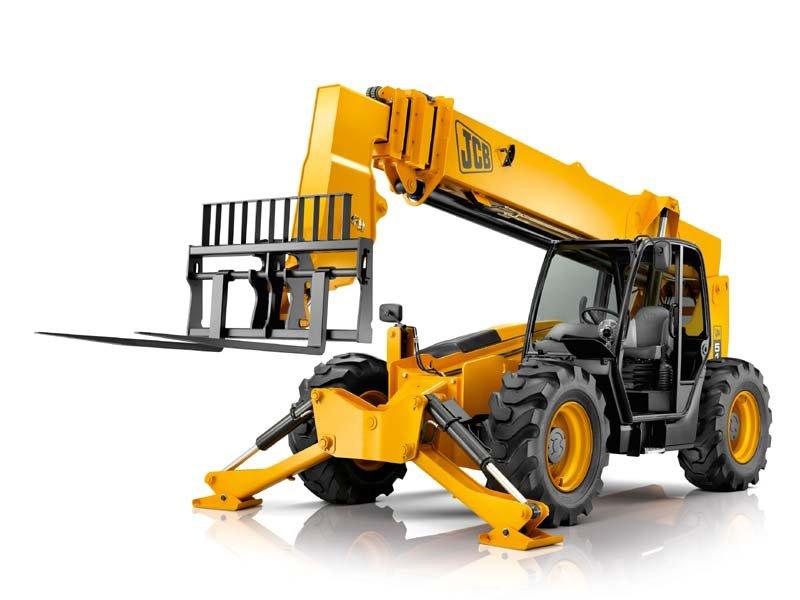Heavy Equipment Rental: Huge Equipment for Any Construction Project
Heavy Equipment Rental: Huge Equipment for Any Construction Project
Blog Article
Optimize Your Budget by Understanding the Expenses Related To Building And Construction Equipment Leasings
Recognizing the full extent of expenses associated with construction devices leasings is vital for optimizing your budget plan. What techniques can be employed to efficiently handle these prices and ensure a more reliable rental experience?
Introduction of Rental Costs
When taking into consideration building devices rentals, recognizing the associated prices is paramount for effective budgeting and job preparation. Rental prices can vary significantly based upon numerous factors, including equipment type, period of leasing, and area. The initial rental charge usually shows the tools's market need and its associated operational abilities, affecting the general expense.
Along with the base rental rate, secondary expenses may arise, such as transport fees, gas surcharges, and maintenance costs. It is vital to represent these additional costs to accurately analyze the total cost of renting tools. The rental period can influence prices; longer services may certify for affordable prices, while temporary services may incur higher day-to-day fees.

Malfunction of Rental Rates
A comprehensive understanding of rental rates is important for specialists and project managers aiming to optimize their spending plans. Rental rates for building devices normally contain a number of elements, consisting of base rates, time-based fees, and usage fees.
Base rates are the core costs connected with the leasing of the tools, commonly figured out by the kind and size of the machinery. These prices can differ significantly, affected by elements such as equipment demand, availability, and regional market fads. Time-based fees, which may be daily, weekly, or monthly, offer to suit various job timelines and rental periods.
Furthermore, rental prices may consist of use costs, which are applicable when devices is used past a defined limit, making certain that the rental company can represent deterioration. Seasonal demand variations can also affect rental rates, with peak building and construction periods usually regulating higher costs.
In addition, comprehending the rental firm's plans pertaining to maintenance and insurance policy can supply additional insight into the general price structure. By evaluating these elements, specialists can make enlightened decisions, guaranteeing the selection of rental equipment aligns with both project demands and budget restrictions.
Additional Costs to Think About
Comprehending the intricacies of extra costs is vital for specialists to manage their total rental costs successfully. Past the conventional rental rates, different additional charges can significantly affect the total price of equipment leasing. These fees commonly include shipment and pickup fees, which can differ based on distance and logistics associated with delivering the equipment to and from the work website.
Additionally, some rental firms might enforce fuel additional charges if the equipment is returned with less gas than when rented out. It is also necessary to know possible cleansing costs, especially for specific devices that needs detailed upkeep after use.

Completely evaluating the rental contract and clearing up these extra fees upfront can aid professionals avoid unforeseen expenses and make certain that budgets click site continue to be intact throughout the job lifecycle.
Upkeep and Repair Work Expenses
Normal repair and maintenance expenditures are usually neglected variables that can significantly affect the general cost of construction devices rentals. When renting equipment, it is vital to take read this post here into consideration not only the rental fees yet likewise the potential expenses connected with keeping the machinery in optimum operating problem.
Many rental business consist of standard maintenance as part of the rental arrangement; nevertheless, more unanticipated failures or substantial fixings can bring about extra expenses. It's important to review the rental agreement meticulously to comprehend what upkeep solutions are covered and what responsibilities fall on the occupant.
Furthermore, devices that is not well-kept can cause inefficiencies on duty site, potentially triggering hold-ups and boosting project expenses. To alleviate these dangers, it is suggested to conduct normal inspections and preserve open interaction with the rental copyright concerning any kind of problems that occur during use.
Insurance Policy and Liability Expenses
Insurance policy and obligation prices are important elements that can considerably impact the overall cost of building devices rentals (equipment rental company). These prices make certain that both the rental company and the client are protected from prospective economic losses arising from accidents, damage, or burglary during the rental period

Additionally, customers ought to be mindful of any type of deductibles or exclusions in the insurance plan, as these can impact prospective out-of-pocket expenses. Recognizing the conditions of any type of insurance protection is important to avoid unexpected costs. Eventually, budgeting for insurance policy and responsibility expenditures can help make sure a smoother rental experience and shield against economic risks connected with basics building projects.
Conclusion
In verdict, a comprehensive understanding of the costs linked with building and construction equipment rentals is vital for effective spending plan administration. Ultimately, informed decision-making concerning equipment rentals adds to the total success of construction ventures.
Rental costs can differ considerably based on several variables, consisting of tools kind, duration of service, and area (dozer rental). The rental duration can influence rates; longer rentals might qualify for reduced rates, while temporary leasings could sustain greater day-to-day charges
By carrying out complete research and engaging with credible rental business, service providers can efficiently browse the complexities of rental prices, eventually maximizing their monetary sources.
Past the common rental rates, numerous supplementary fees can dramatically affect the total cost of equipment leasing. Rental firms frequently give responsibility insurance coverage that covers injuries to third parties or damages to building, while tools damage insurance can cover the price of fixings or substitute if the leased equipment is harmed.
Report this page